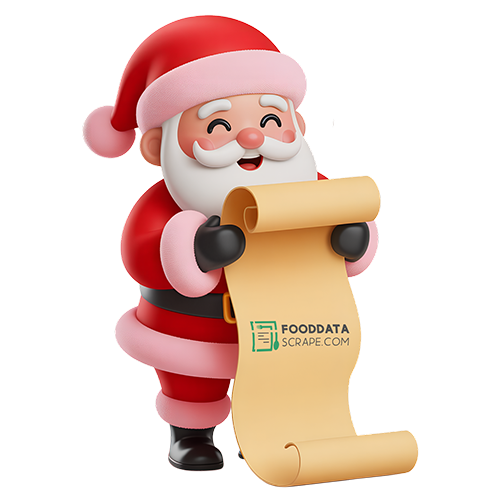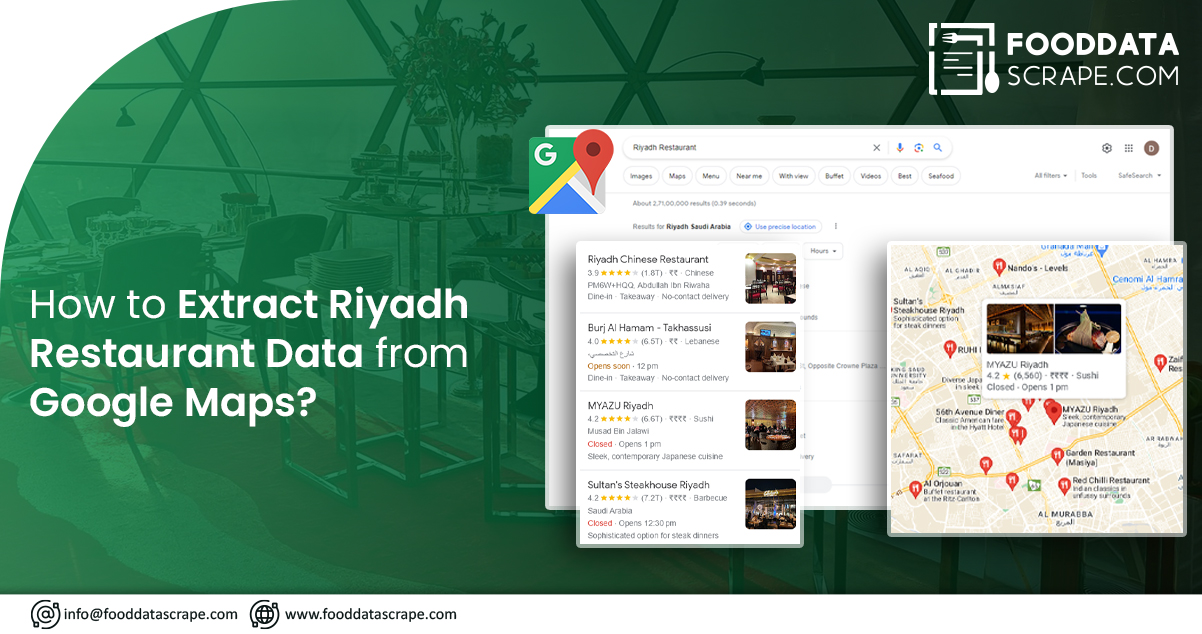Riyadh, located in Saudi Arabia, is known for its rich culinary scene, with many restaurants catering to diverse tastes and preferences. Whether you're a food enthusiast looking to explore the city's dining options or a business owner seeking market insights, scraping restaurant data from Google Maps can provide valuable information. In this comprehensive guide, we will walk you through the process of web scraping restaurant data from Google Maps, step by step.
How Can Google Map Scraping Help Business?
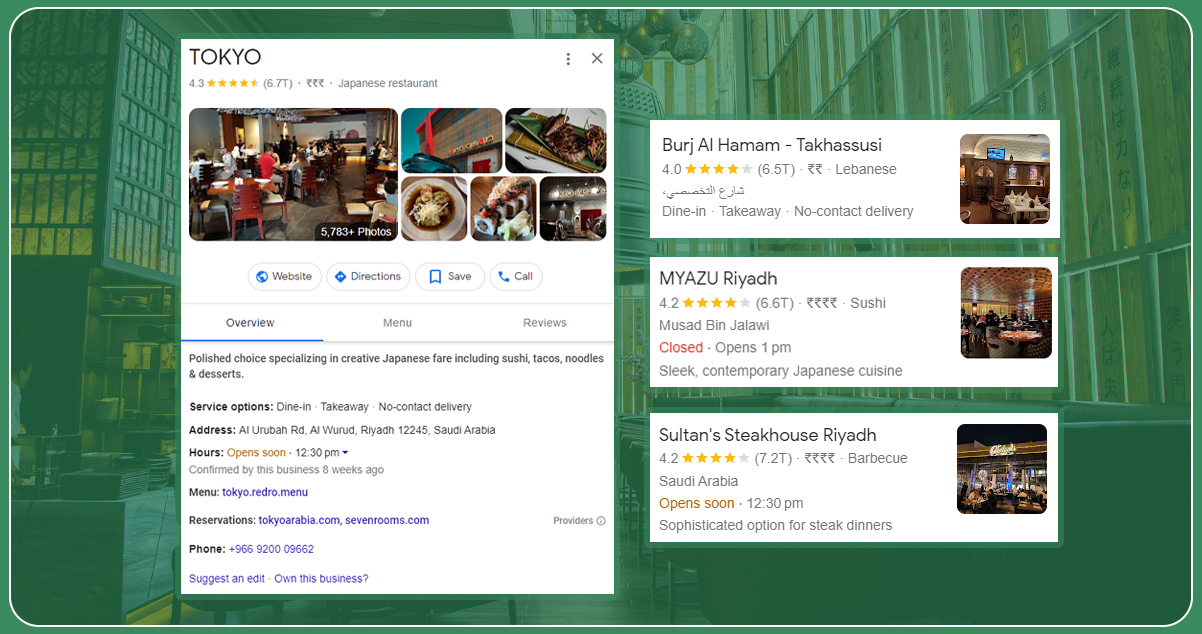
Google Maps scraping is a versatile and valuable tool that can assist various aspects.
It offers a wealth of data for businesses that aid in market research and competitive analysis. Companies can extract information about competitors, identify market trends, and understand customer preferences in specific geographic areas. This data is a foundation for informed decision-making, enabling businesses to refine their strategies, target the right audience, and stay competitive in their respective markets.
In local SEO (Search Engine Optimization), Google Maps scraping plays a crucial role. Accurate and up-to-date information on Google Maps is essential for businesses with physical locations. Scraping restaurant data ensures businesses can optimize their local listings, enhance their online visibility, and effectively reach potential customers.
Furthermore, researchers and analysts benefit from Google Maps scraping as it provides a valuable resource for studying geographic trends, market saturation, and regional disparities. It assists in identifying expansion opportunities, assessing geographic factors' impact on various industries, and conducting in-depth market research.
Google Maps is a familiar tool for finding nearby businesses and navigating your surroundings. Beyond its navigation capabilities, Google Maps is a valuable resource for businesses and data enthusiasts, offering diverse information.
On Google Maps, you can access various data related to businesses, including restaurants. This data encompasses crucial details such as contact information, website links, customer reviews, and operating hours. Moreover, Google Maps provides location data in latitude and longitude coordinates, which businesses can leverage to gain insights into their surroundings and potential opportunities.
However, it's crucial to recognize that while Google Maps data is valuable, it may only sometimes be accurate. Businesses can claim their listings and update their information, but the accuracy of these details can vary. Additionally, Google relies on a combination of business-generated data and third-party sources, which may occasionally lead to discrepancies. Therefore, understanding the nature of the data available on Google Maps and its sources is essential for those interested in extracting restaurant data from the platform.
Why Scrape Riyadh Restaurant Data from Google Map
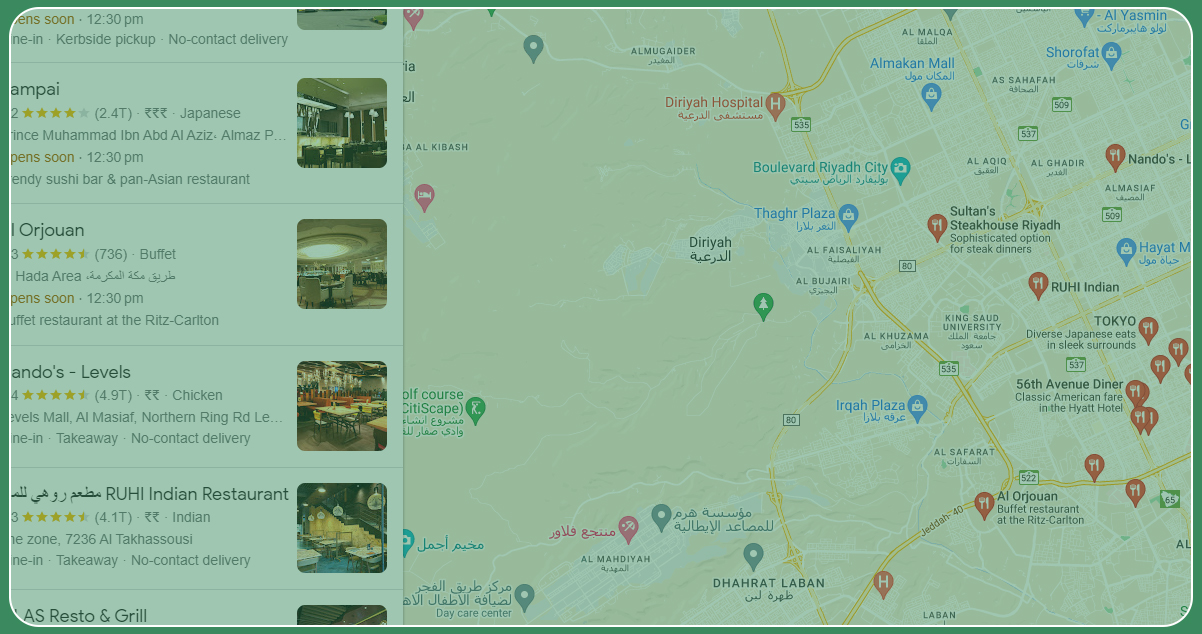
Scraping Riyadh restaurant data from Google Maps can offer several valuable benefits and use cases:
Market Research: If you're a business owner or entrepreneur planning to open a restaurant in Riyadh, scraping food delivery data can provide insights into the competition. You can analyze factors such as popular cuisines, average ratings, and customer reviews to identify gaps in the market and make informed decisions about your restaurant concept.
Consumer Insights: For consumers and food enthusiasts, restaurant data scraping services can help you discover new dining options, read reviews, and explore the culinary diversity Riyadh has to offer. It's an excellent way to stay up-to-date with restaurant trends and recommendations.
Comparative Analysis: Extract Riyadh restaurant data from Google Maps to compare restaurants based on various criteria, such as price range, location, cuisine type, and customer ratings. It can help you make more informed choices when dining out.
Personal Projects: If you have a personal project or hobby related to food and restaurants, scraping data can be a valuable source of information. You can create your restaurant directory, develop a recommendation app, or conduct culinary research.
Business Expansion: For existing restaurant owners or chains, scraping data can assist in market expansion decisions. It helps identify potential locations, understand local preferences, and evaluate the competitive landscape.
Data Analysis and Visualization: Data scraped from Google Maps can be analyzed and visualized to gain insights into restaurant trends. You can create charts, graphs, and maps to present the data meaningfully.
Marketing and Promotion: For marketing professionals, scraped data can help to target specific demographics or regions for advertising and promotion campaigns. You can identify potential customer bases and tailor your marketing strategies accordingly.
Educational and Research Purposes: Researchers and academics can use scraped data for consumer behavior, restaurant economics, and urban planning studies. It can contribute to academic research in various fields.
How To Extract Riyadh Restaurant Data?
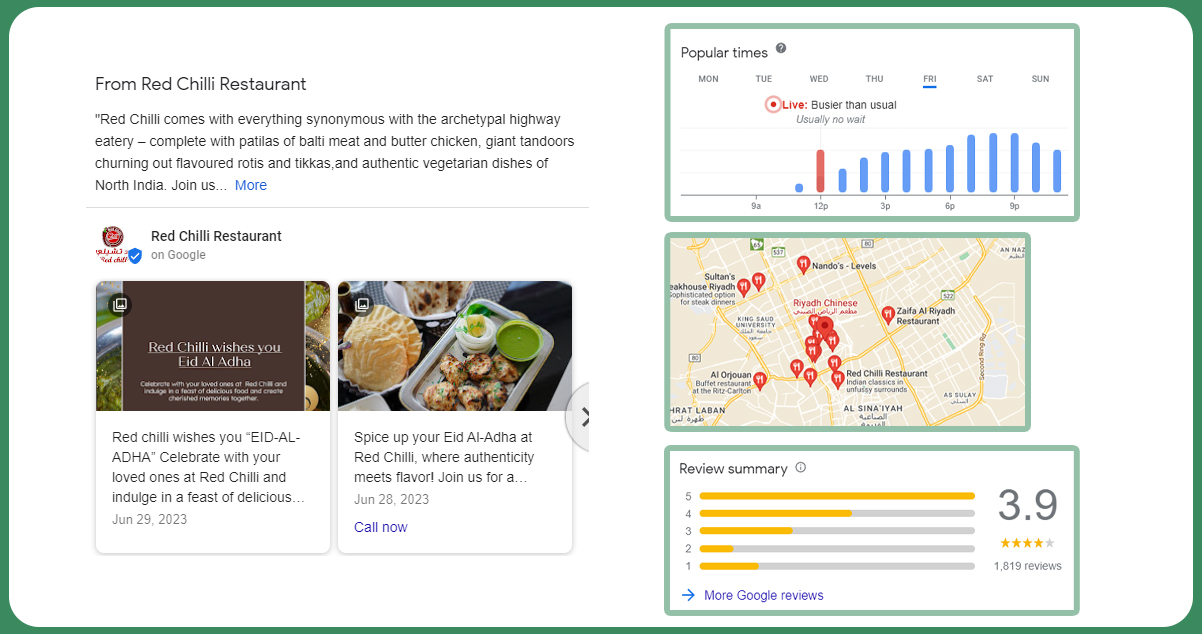
Are you interested in extracting restaurant data from Google Maps? Web scraping offers an efficient solution. It is the process of automating data extraction from websites, much like employing a digital robot to search and gather specific information for you. Several tools and software options are available for extracting restaurant data from Google Maps, including BeautifulSoup, Scrapy, Octoparse, and Parsehub. The choice depends on your specific requirements. Now, let's dive into a step-by-step guide on how to extract restaurant data using web scraping:
Define Your Data Needs: Identify the specific information you want to scrape. For instance, if you're interested in restaurants in a particular location, determine the details you wish to extract for each restaurant, such as name, address, phone number, website, and ratings.
Access Google Maps: Open Google Maps in your web browser and initiate a search for the relevant location or area.
Inspect the Page: Once the page loads, right-click and choose "Inspect." This action opens the browser's developer tools.
Isolate the Code: Use the developer tools to locate and isolate the HTML code for the page section containing the restaurant listings. Typically, you must identify the HTML code for the div or section that holds the desired data.
Copy and Paste: Copy and paste the identified code into your chosen web scraping tool. Utilize the tool to parse the HTML and extract the pertinent data.
Structured Data: Save the extracted data in a structured format, such as CSV or JSON. This structured format facilitates further analysis or use of the collected restaurant data.
Data Extraction Using API
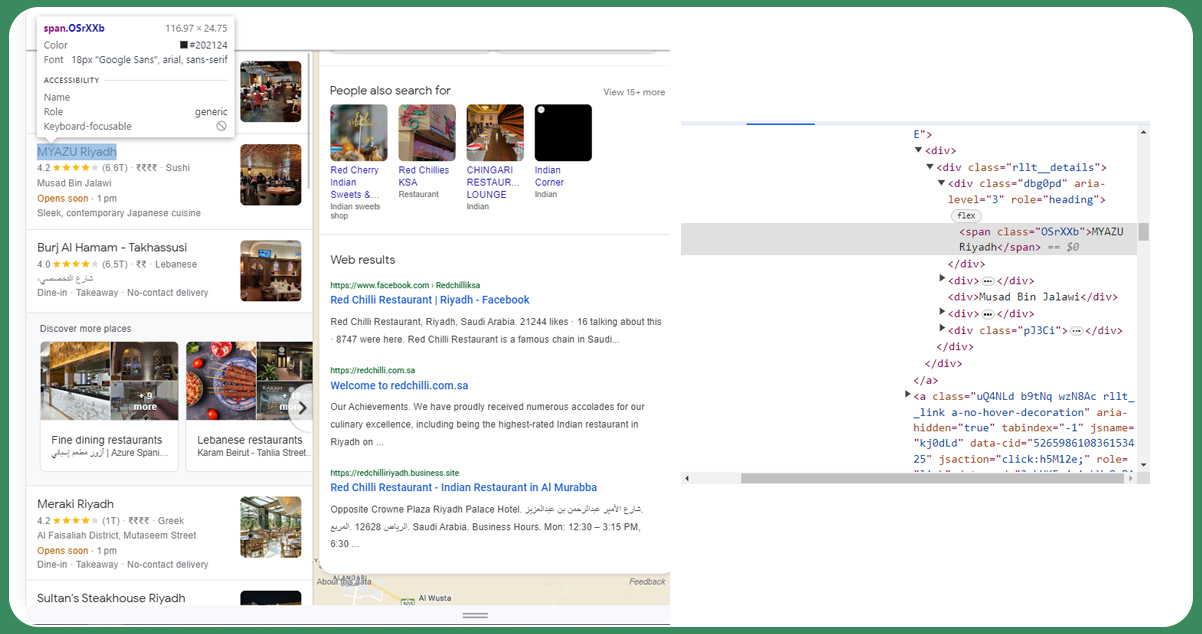
API-based restaurant data extraction is an alternative and highly effective method for acquiring restaurant data from Google Maps. APIs, or Application Programming Interfaces, serve as intermediaries facilitating seamless communication and data exchange between software applications. Leveraging Google Maps APIs enables users to access a wealth of restaurant information, including details like restaurant names, addresses, contact numbers, ratings, and customer reviews.
To embark on the journey of extracting restaurant data via Google Maps APIs, users must first obtain a Google Maps API key. These essential functions, like a password, grant users authorized access to data through the APIs. Once in possession of the API key, users can tap into Google's Places API to conduct restaurant searches and retrieve comprehensive data.
The extracted data typically comes in JSON or XML format, both highly parseable and amenable to processing using various programming languages and tools. API-based data extraction boasts notable advantages, particularly in speed and accuracy, compared to alternative methods like web scraping. However, it's essential to remember that APIs may come with usage limits, and users should be mindful of these limitations when employing Google Maps APIs for data extraction purposes.
Utilizing External Tools for Data Extraction
Let's dive into the exciting realm of extracting restaurant data using a restaurant scraper. These tools are akin to trusty assistants, simplifying data extraction and making our lives easier.
In the realm of third-party tools, you're spoiled for choice with many options, each designed to streamline the data scraping process. If you're seeking an API-based solution, look no further than Food Data Scrape, which offers user-friendly APIs for real-time data extraction.
Popular third-party tools like Data Miner, Google Maps Scraper, and Google Map Extractor come to the forefront for specific Google Maps data extraction needs. These tools boast various features, including data filtering, visualization, and export capabilities. In summary, third-party tools provide a seamless and efficient means of extracting data from Google Maps. Select the tool that aligns with your requirements, and let your trusty assistant take the reins.
Restaurant Data Cleaning
The significance of data cleaning and structuring must be in a balanced state. Picture this scenario: you receive a restaurant dataset from Google Maps that's in disarray—filled with incomplete details, misspelled names, and numerous duplicate entries. It would undoubtedly be a nightmarish task to work with such data. It is precisely why data cleaning and structuring are pivotal in transforming raw data into valuable and dependable information.
When adequately cleaned and structured, your data becomes a valuable asset. You gain the ability to swiftly analyze, visualize, and manipulate the data to serve your specific needs. Now, in terms of tools and software, a diverse array of options can assist you in efficiently cleaning and structuring your data.
For further details, contact Food Data Scrape now! You can also reach us for all your Food Data Aggregator and Mobile Restaurant App Scraping service requirements.

